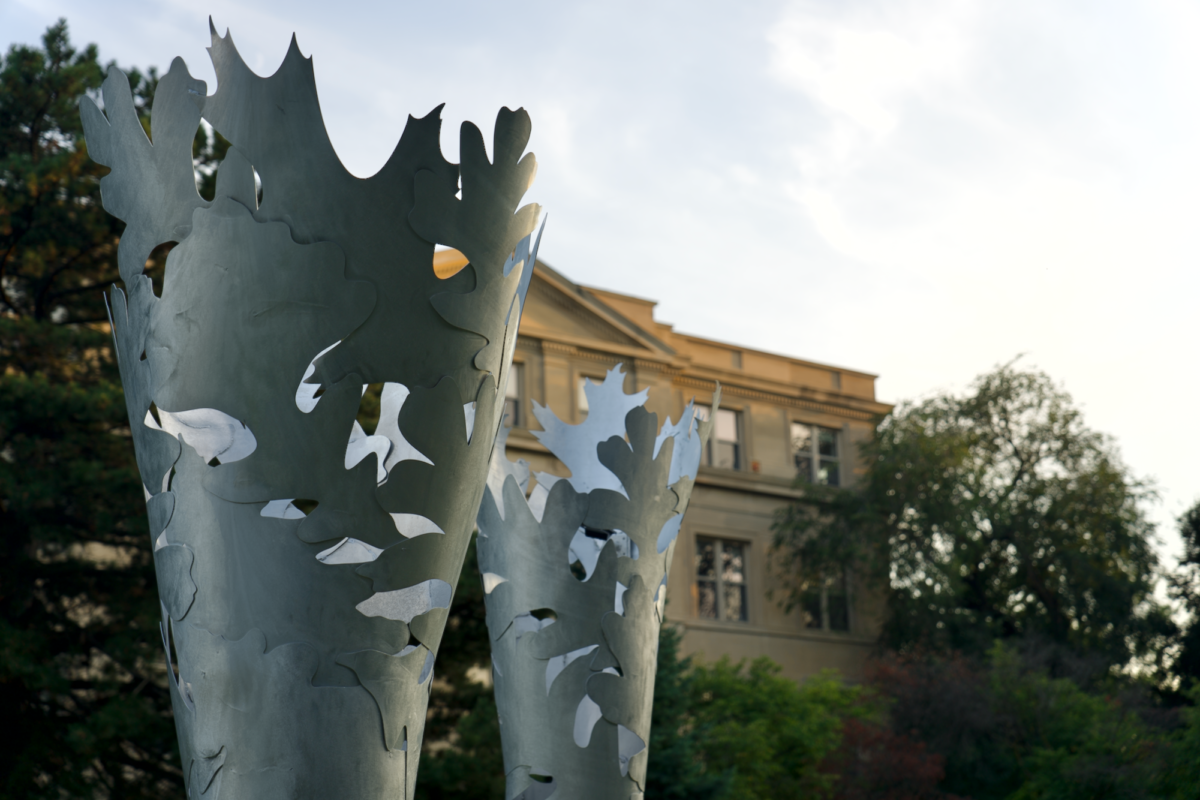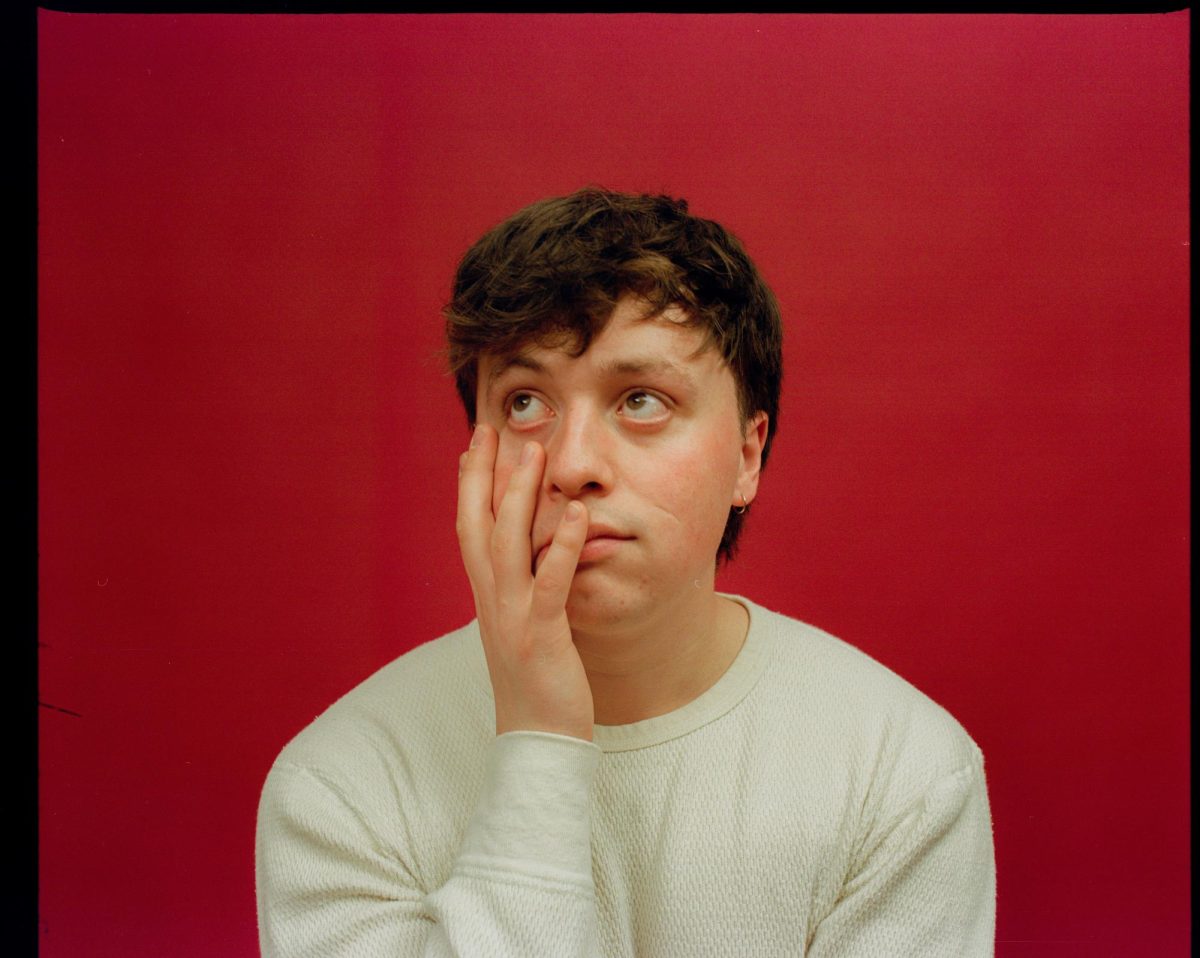Artist Tom Stancliffe created “Ghost Trees” to inspire a feeling and tell a story that includes many layers, according to Sydney Marshall, a curator at Iowa State University Museums.
“He might be working for a meaning he’s trying to get you to, but often he wants to just show an experience, a feeling that he is thinking about and knowing that people will come up with their own meanings,” Marshall said during a curator’s tour of the sculpture on Tuesday.
Stancliffe and his wife were walking late at night at Ledges State Park when the moon was shining through trees to create shadows, and from there, Stancliffe’s inspiration was born.

The twin trees standing between Beardshear and Morrill halls feature LED lights inside and light up at night to cast a shadow.
The trees were layered to show a variety of things, Marshall said.
“This kind of shadow, light, going on through the trees onto the path is his starting memory that he was building off of, but he’s also then thinking of climate change, trees dying out from like Dutch elm disease, the emerald ash borer…what is left behind the trees [and] the image of just like a cicada shell and kind of layering all these things together,” Marshall said.
The sculptures were made to be “large and looming” so that they were not dwarfed by the trees around them. According to Marshall, the separation between them encourages viewers to walk through and get close to the sculpture.
Each tree is made from welded aluminum and weighs about 250 pounds. Four people, including Stancliffe, lifted them off a trailer to be secured into their spots in the sculpture garden for the next two years.
Stancliffe designed each aluminum piece on a computer to be cut and welded and bent them himself. Doing much of the work himself saved a lot of hassle on Stancliffe’s end, rather than if someone had made them based on Stancliffe’s direction, Marshall said.
“You would have to describe exactly the curve of each single piece and how to weld to each one,” Marshall said. “It’s way easier for [Stancliffe] to just be able to do that in the studio and kind of play with it and rebend and make sure that the shape is right—where if you were sending that to somebody else, it would be really complicated.”
The Elizabeth and Byron Anderson Sculpture Garden just outside of Beardshear and Morrill halls features various sculptures and is surrounded by flowers in an area heavily traveled by foot.
“The garden is meant to be a public space to see examples of sculpture, and then hopefully, people look at the sculptures and then come inside,” Marshall said.
Stancliffe is a professor of art at the University of Northern Iowa and has multiple pieces of art on display at Iowa State, including his exhibit “Drift,” which is on display at the Christian Petersen Art Museum for the remainder of the semester.








